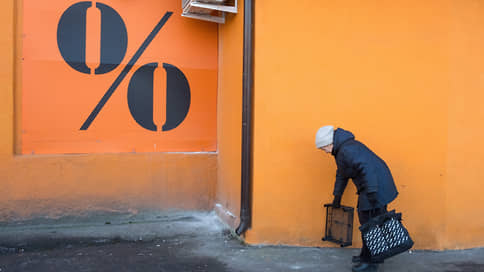After raising the key rate, the largest banks sharply raised deposit rates
[ad_1]

After raising the key rate, the largest banks sharply raised deposit rates, in some cases up to 10% per annum. Other credit institutions may follow suit, including those that have already raised rates in previous months. Since banks need to restore the volume of long liabilities, the rates are rising mainly on long deposits. Banks can pass on the inevitable increase in costs to borrowers, so that the growth of interest rates on loans, apparently, will not have to wait long.
After an unexpectedly sharp rise in the key rate by 100 bp. to 8.5%, the largest Russian banks also sharply increased the profitability of deposits. From next week, Sberbank and VTB announced an increase in maximum rates by 0.5 percentage points, and Alfa-Bank by 1 percentage point. As a result, rates rose to 10% per annum. MTS-Bank plans to increase deposit rates in the next week, FC Otkritie – “in the coming days”, without specifying the size of the increase. In Sovcombank rates on deposits will be discussed in the near future. Post-Bank is considering the possibility of adjusting rates, despite the fact that in July they already raised rates by 1.5–3.5 percentage points. PSB and MKB will make a decision taking into account “market conditions” and “customer needs”.
A number of banks, in particular, Rosbank and Zenit, announced an increase in rates on individual deposits by 0.4–0.5 percentage points an hour before the announcement of a new key rate. At the same time, credit institutions raised rates back in May-June. According to Frank RG, in May, out of the top 20 banks, VTB, Post-bank and Russian Standard Bank raised their maximum rates (by 0.5-1.25 percentage points), in June this was done by Sovcombank, VBRR, Rosbank, MTS-bank, HKF-bank (up to 1.5 percentage points).
An increase in the profitability of deposits from banks in June could have been a leading step related to their expectation of an increase in the key rate, says banking expert Alexei Nechaev.
According to Frank RG, by July 20, the average rate on deposits in the top 20 was 8.98% per annum. However, according to the Central Bank, the maximum average rate in the top 10 banks has been at the level of 7.8% per annum since the end of June.
When determining the profitability of deposits, in addition to the key rate, banks evaluate the situation in the retail banking market, debt securities, interbank loans, inflation and inflation expectations, the balance of attracted and placed funds, notes Stanislav Duzhinsky, head of external communications at HCF-Bank. “Judging by the situation on the market, banks will now massively increase their deposit rates by 0.5–1 percentage points. But in general, interest rates will increase for a period of one year or more. We do not predict such a significant increase in short-term deposits,” says Maria Tatarintseva, Deposits product manager at Sravni.ru. “Now they need a longer planning horizon and long-term money in order to work normally,” she explains. As a general rule, says Mr. Nechaev, banks make their short-term rates more attractive when they expect rates to go down to reduce interest rate risk; now the situation is reversed. However, in his opinion, while the majority of market participants “do not consider the increase cycle long-term.”
A sharp rise in the key rate should affect bank income.
In June of this year, VTB Deputy Chairman Dmitry Pyanov estimated that a 100 bp increase in the key rate would p. means a loss of about 18 billion rubles. net interest income for the year. Sberbank’s sensitivity to interest rate risk may be less, Olga Naydenova, senior analyst at Sinara investment bank, estimates. But, in her opinion, a small loss in interest income cannot be called a significant negative, “given the strong financial results that banks will show at the end of the year.”
Moreover, with the growth of rates, banks can benefit from the revaluation of assets. “While in liabilities, the increase in the rate is translated only to some of them,” explains Ms. Naydenova. So, on the balance sheets of many banks there is a large proportion of free or almost free liabilities in the form of current accounts, says Olga Naydenova. In addition, “banks are good at passing on interest costs to borrowers,” she adds. This is also noticeable in the results of 2022, when, with an increase in the key rate to 20% at the beginning of the year, the banking sector as a whole managed to demonstrate a slight increase in interest income, the expert concludes. According to the Central Bank, after a drop in net interest income in the second quarter of 2022 to 0.74 trillion rubles, in the third and fourth quarters they reached 1.1 trillion rubles. and 1.28 trillion rubles. respectively, which exceeded the quarterly figures of the previous two years.
[ad_2]
Source link





